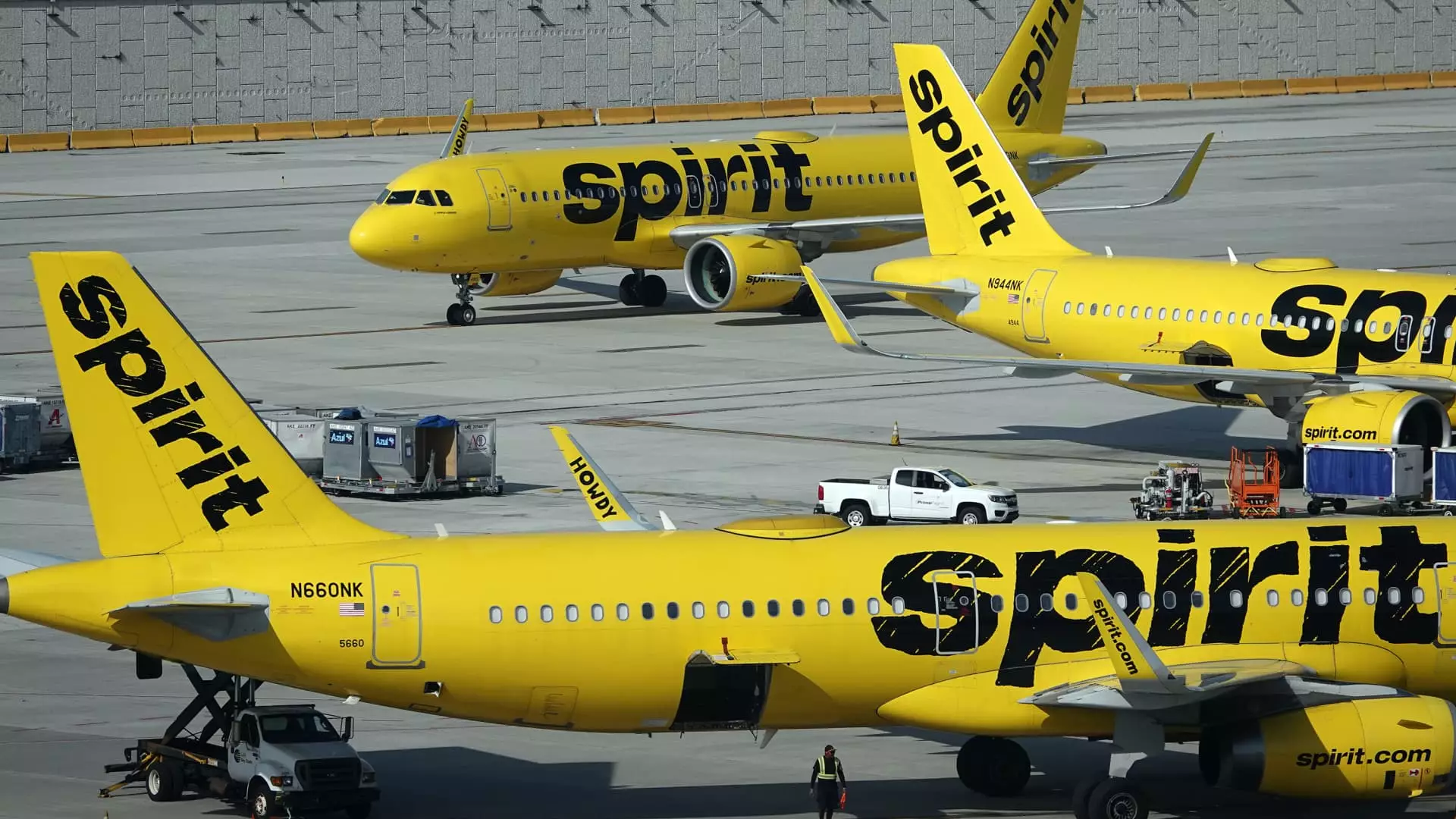Spirit Airlines has recently made headlines as its shares witnessed a remarkable surge of over 20%, following the announcement of significant organizational changes aimed at revitalizing the beleaguered budget carrier’s finances. The airline has outlined a multifaceted strategy designed to reduce operational costs and raise capital, which includes the sale of 23 older Airbus aircraft—a move projected to generate approximately $519 million. This action underscores the urgent need for Spirit to recalibrate its business model in a turbulent aviation market, which has been significantly impacted by the ongoing ripples of the pandemic.
Despite the positive investor response to Spirit’s announcements, the airline is grappling with formidable challenges. It has delayed the refinancing of over $1 billion in debt, extending the deadline until late December in an effort to stabilize its financial footing, particularly concerning its relationship with its credit card processor. This predicament illustrates the broader struggles within the airline industry, where fluctuating travel demand and operational setbacks—particularly the grounding of Pratt & Whitney powered aircraft—have made recovery an uphill battle.
Spirit’s financial struggles have become evident, as its stock value has plummeted more than 80% this year. This decline was exacerbated when a judge blocked its proposed acquisition by JetBlue Airways, a development that many analysts believe has severely limited Spirit’s growth prospects. While the recent rise in shares is a temporary boon, it does not negate the underlying issues that still threaten the company’s stability.
In what may be a harbinger of deeper cuts, Spirit has indicated that it plans to trim costs by approximately $80 million primarily through layoffs. Although the company has yet to provide specifics on the number of employees to be affected, indications of an impending reduction in workforce have begun to materialize. Notably, Spirit started furloughing around 200 pilots in September, raising questions about the airline’s long-term staffing strategy. Conversely, the situation appears somewhat more favorable for flight attendants, as an influx of voluntary leaves has led to a relatively stable crew environment.
Furthermore, Spirit anticipates a 2025 capacity reduction in the mid-teens percentage range compared to current levels. This forecast signals a potential shift in operational strategy, as the airline aims to align its capacity with the current realities of market demand.
Adding a twist to an already complex narrative, recent reports suggest that Spirit Airlines is once again engaging in merger discussions with Frontier Airlines. This development could potentially reshape the competitive landscape of budget travel in the United States, as the two carriers previously had a merger agreement that fell through when JetBlue made a counteroffer to acquire Spirit in April 2022.
While Spirit’s forecast of a negative operating margin of 24.5% for the third quarter is an improvement from earlier estimates of a 29% shortfall, it still highlights the pressing need for effective strategic prioritization. The outcome of the current merger talks could be instrumental in determining the airline’s future viability and market position.
Spirit Airlines stands at a crossroads, facing significant challenges but also seeking opportunities for recovery and growth. The coming months will be pivotal as the airline implements its restructuring plans while navigating the complexities of the aviation landscape.


Leave a Reply